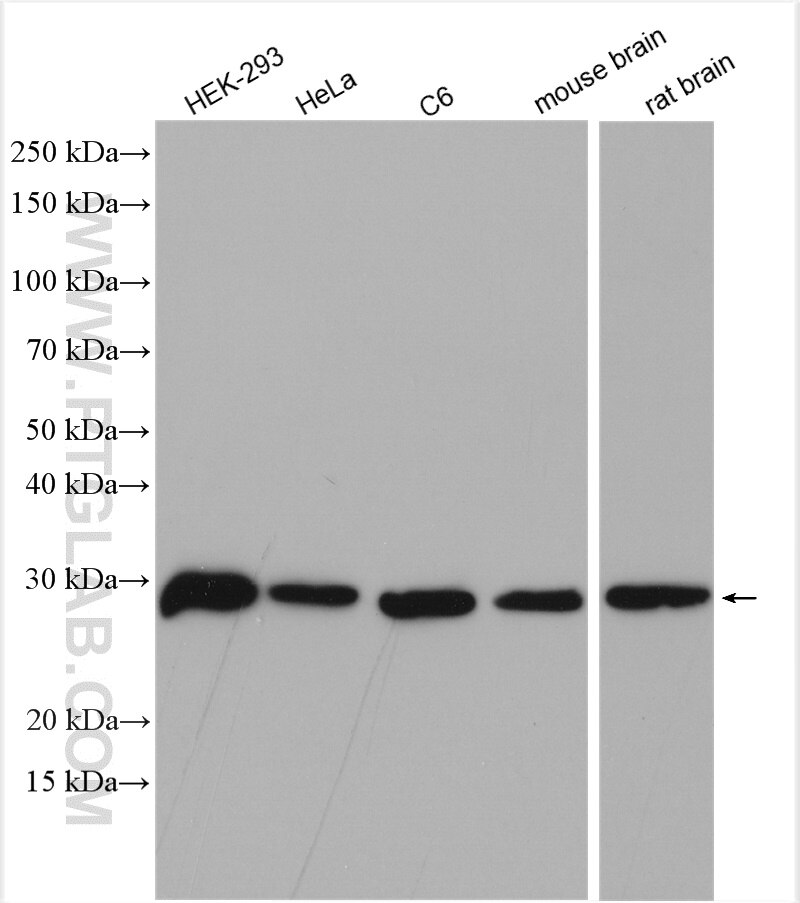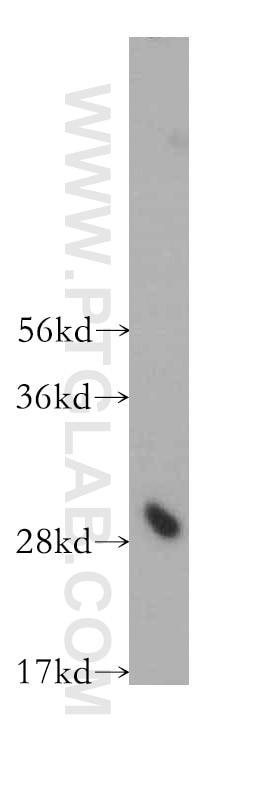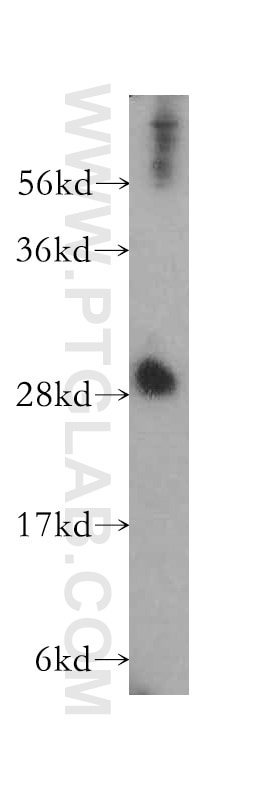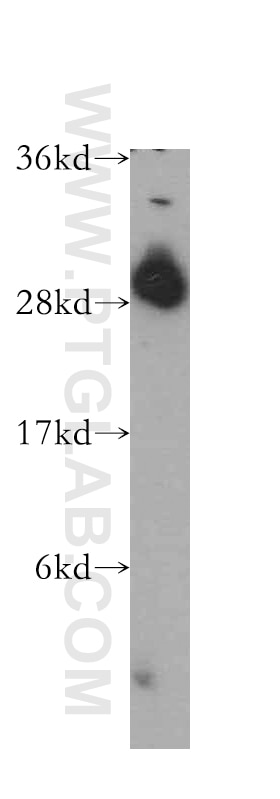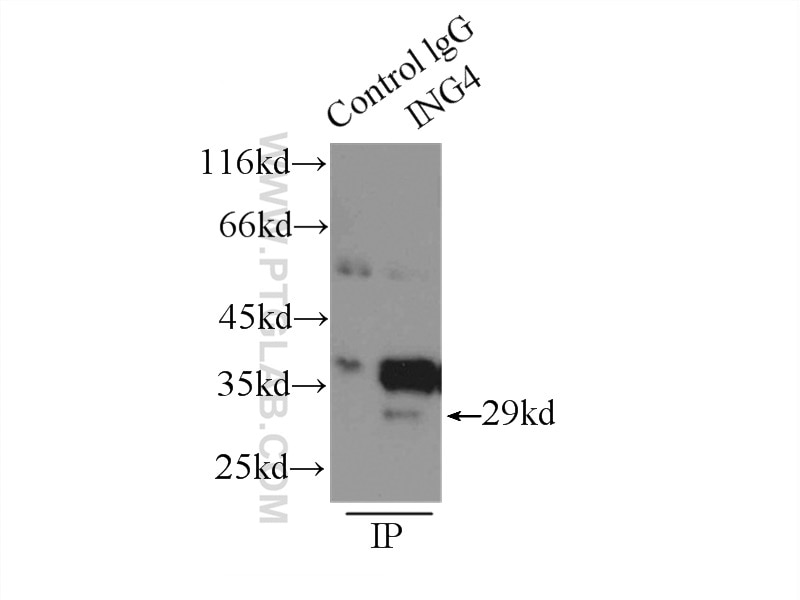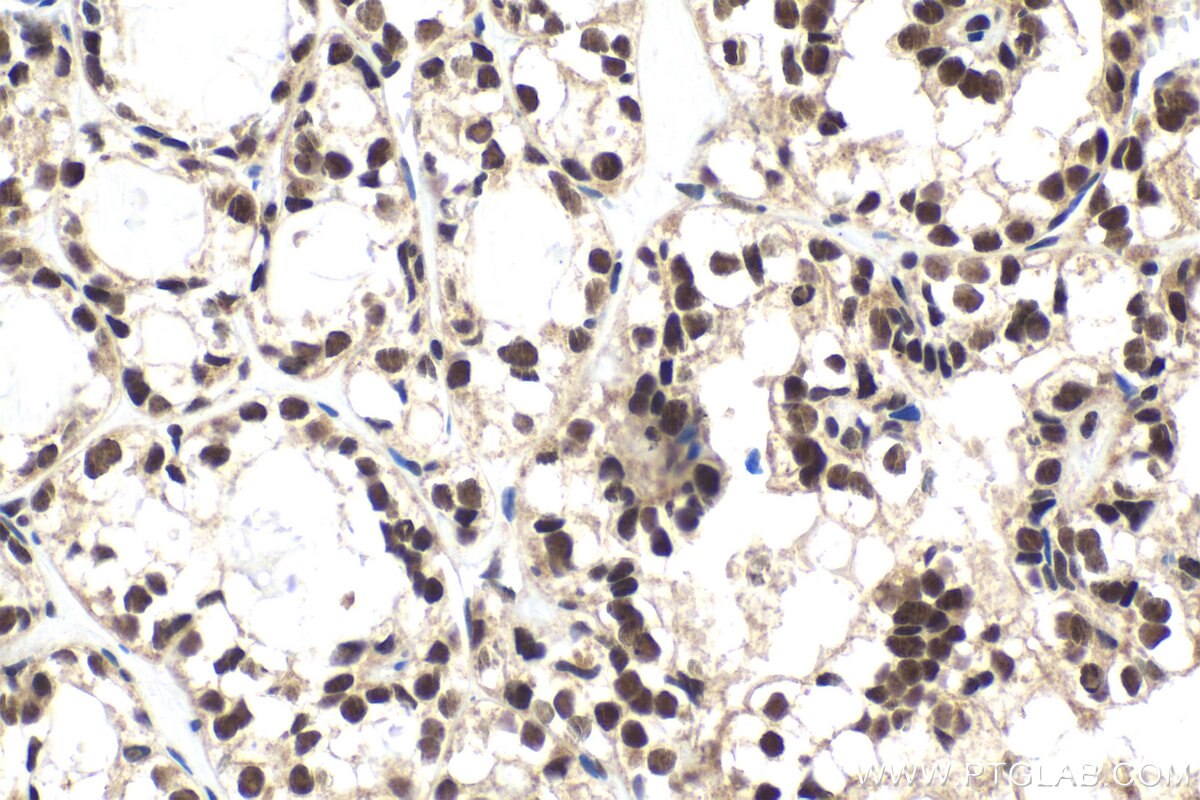Tested Applications
| Positive WB detected in | HEK-293 cells, HeLa cells, C6 cells, mouse brain tissue, rat brain tissue |
| Positive IP detected in | HEK-293 cells |
| Positive IHC detected in | human thyroid cancer tissue Note: suggested antigen retrieval with TE buffer pH 9.0; (*) Alternatively, antigen retrieval may be performed with citrate buffer pH 6.0 |
Recommended dilution
| Application | Dilution |
|---|---|
| Western Blot (WB) | WB : 1:2000-1:16000 |
| Immunoprecipitation (IP) | IP : 0.5-4.0 ug for 1.0-3.0 mg of total protein lysate |
| Immunohistochemistry (IHC) | IHC : 1:500-1:2000 |
| It is recommended that this reagent should be titrated in each testing system to obtain optimal results. | |
| Sample-dependent, Check data in validation data gallery. | |
Published Applications
| KD/KO | See 1 publications below |
| WB | See 8 publications below |
| IHC | See 9 publications below |
| IF | See 2 publications below |
| IP | See 2 publications below |
Product Information
10617-1-AP targets ING4 in WB, IHC, IF, IP, ELISA applications and shows reactivity with human, mouse, rat samples.
| Tested Reactivity | human, mouse, rat |
| Cited Reactivity | human, mouse |
| Host / Isotype | Rabbit / IgG |
| Class | Polyclonal |
| Type | Antibody |
| Immunogen | ING4 fusion protein Ag0960 Predict reactive species |
| Full Name | inhibitor of growth family, member 4 |
| Calculated Molecular Weight | 29 kDa |
| Observed Molecular Weight | 29 kDa |
| GenBank Accession Number | BC007781 |
| Gene Symbol | ING4 |
| Gene ID (NCBI) | 51147 |
| RRID | AB_2127940 |
| Conjugate | Unconjugated |
| Form | Liquid |
| Purification Method | Antigen affinity purification |
| UNIPROT ID | Q9UNL4 |
| Storage Buffer | PBS with 0.02% sodium azide and 50% glycerol , pH 7.3 |
| Storage Conditions | Store at -20°C. Stable for one year after shipment. Aliquoting is unnecessary for -20oC storage. 20ul sizes contain 0.1% BSA. |
Background Information
ING4, also named as p29ING4, belongs to the ING family. It is a component of the HBO1 complex which has a histone H4-specific acetyltransferase activity, a reduced activity toward histone H3 and is responsible for the bulk of histone H4 acetylation in vivo. It may inhibit tumor progression by modulating the transcriptional output of signaling pathways which regulate cell proliferation. ING4 can suppress brain tumor angiogenesis through transcriptional repression of RELA/NFKB3 target genes when complexed with RELA. It may also specifically suppress loss of contact inhibition elicited by activated oncogenes such as MYC. Represses hypoxia inducible factor's (HIF) activity by interacting with HIF prolyl hydroxylase 2 (EGLN1). ING4 is a tumor suppressor gene that interacts with NFkB and represses its transcriptional activity. Several lines of evidence suggest that the tumor suppressor gene ING4, NFkB and its target genes matrix metalloproteases MMP-2, MMP-9 and u-PA are critically involved in tumor invasion. This antibody is a rabbit polyclonal antibody raised against full length human ING4 antigen.
Protocols
| Product Specific Protocols | |
|---|---|
| WB protocol for ING4 antibody 10617-1-AP | Download protocol |
| IHC protocol for ING4 antibody 10617-1-AP | Download protocol |
| IP protocol for ING4 antibody 10617-1-AP | Download protocol |
| Standard Protocols | |
|---|---|
| Click here to view our Standard Protocols |
Publications
| Species | Application | Title |
|---|---|---|
Adv Sci (Weinh) Inhibition of CK2/ING4 Pathway Facilitates Non-Small Cell Lung Cancer Immunotherapy | ||
Blood The Hbo1-Brd1/Brpf2 complex is responsible for global acetylation of H3K14 and required for fetal liver erythropoiesis. | ||
Cancer Res Transient Induction of ING4 by MYC Drives Prostate Epithelial Cell Differentiation and its Disruption Drives Prostate Tumorigenesis. | ||
Oncogene Aberrant CREB1 activation in prostate cancer disrupts normal prostate luminal cell differentiation. | ||
Carcinogenesis Role of ING4 in human melanoma cell migration, invasion and patient survival. | ||
Mol Cell Biol The ING4 tumor suppressor attenuates NF-kappaB activity at the promoters of target genes. |
